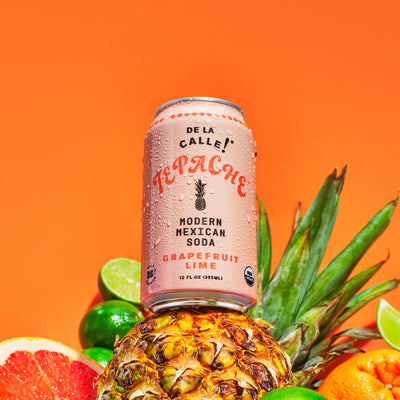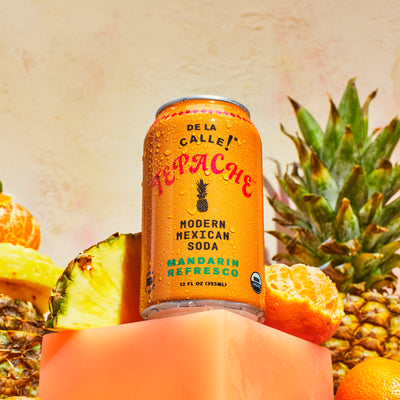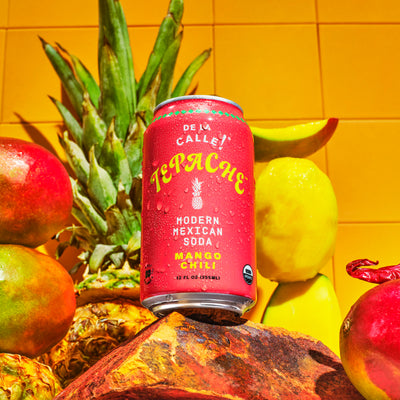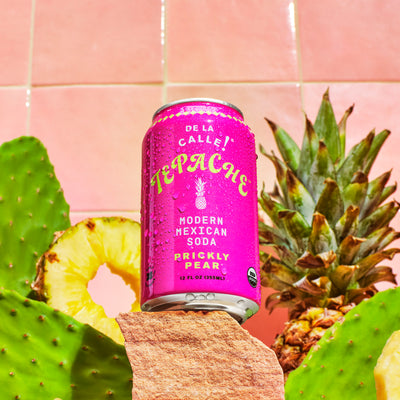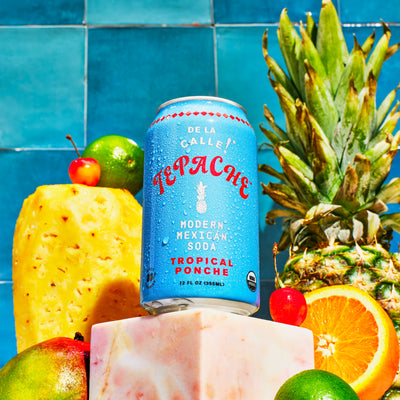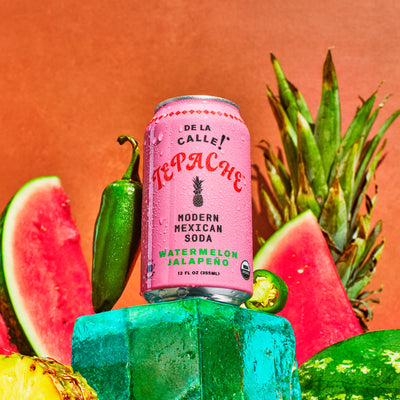Mexican Fruit: Benefits, Recipes, And More!

Although you might immediately think of tacos and huevos rancheros when you think of Mexican cuisine, fruit is a staple of Mexican food culture.
In this article, we’ll take a look at six of the most popular Mexican fruits, their health benefits, and different ways to use these tasty, tropical delights!
Sapote
Mexican sapote is a winter fruit with bright red and orange flesh that has a buttery texture like an avocado. The flesh tastes like apricots and sweet potatoes. The large black pits of the sapote can be used for beverages and were originally used by the Aztecs to make chocolate drinks.
This fruit is sometimes also referred to as mamey sapote. On the tree, the fruit grows in a football-like shape and has fuzzy brown skin.
What Are the Health Benefits of Sapote?
Aside from being delicious, there are several benefits to incorporating sapote into your diet. It is vitamin and nutrient-rich. Mexican sapote contains vitamin C and A as well as magnesium, iron, copper, and B6.
How Can I Use Sapote?
Much like avocados, sapote can be used in smoothies to give them a smooth, creamy texture. You can also blend sapote into your ice cream to give it a milkshake-like texture without adding more dairy.
Pitaya
In other parts of the world, pitaya is known as dragon fruit, and in Mexico is sometimes spelled pitahaya. This fruit causes a flurry in Mexico because it is only available between April and June.
Pitaya tastes similar to a kiwi but has a distinct crunchy texture. This beautiful fruit grows on a plant that looks like a cactus and is ripe once it reaches about the size of a baseball. The outside of pitaya is a vibrant, hot pink, and the flesh is white and speckled with small edible black seeds.
What Are the Health Benefits of Pitaya?
There are numerous benefits of pitaya. It is rich in antioxidants, naturally fat-free, and contains prebiotics. Prebiotics are fibers that feed probiotic bacteria in your gut which aids in digestion and enhances immunity. Pitaya may also help lower your blood sugar.
How Can I Use Pitaya?
The best way to enjoy pitaya is to eat it raw. Simply cut the fruit in half and spoon out the flesh. Given that it has a milder flavor, it also makes a great addition to fruit salads and tastes delicious on top of ice cream.
Soursop
Soursops don’t look inviting when they are hanging from a tree. This large pear-shaped fruit is green and covered with spiky thorns. However, you’re in for a treat once you cut it open. The flesh is soft and creamy.
Although soursop smells like a pineapple, it tastes more like a mixture of bananas, oranges, and strawberries.
What Are the Health Benefits of Soursop?
The two major health benefits of soursop are that it is thought to reduce inflammation and treat diarrhea. For this reason, it may be a beneficial fruit to incorporate into kids’ diet seeing as they are prone to constipation. It is also sometimes used as an alternative cancer treatment.
How Can I Use Soursop ?
One tasty way to enjoy soursop is to turn it into juice. Once your soursop is ready to be consumed, simply mix it with sweetener, water, lime, salt, milk of your choice, and your favorite spices to make a refreshing tropical beverage.
Rambutan
Rambutans are a stunning, golf ball-sized red fruit with long hairs. Although they look similar to lychees, they are different types of fruit. That being said, they share their sweet taste and grape-like texture. Rambutans are commonly found in southern Mexico.
What Are the Health Benefits of Rambutan?
Rambutan is rich in vitamin C. Vitamin C is a powerful antioxidant that can help protect your cells from free radicals, harmful molecules that can cause serious damage. Rambutans also contain copper and fiber.
How Can I Use Rambutan?
You can eat soursop whole by simply cutting the skin on and popping the whole fruit in your mouth. Make sure to watch out for the big, hard seed in the middle of the rambutan. You’ll need to spit it out once you reach it.
If you want to get more adventurous, you can turn your rambutan into agua fresca, a traditional Mexican drink.
Prickly Pear
Prickly pear is also known as tuna in Mexico. Named for the plant it grows on and its spiky exterior, prickly pear grows on the Nopal cactus.
The peak season for prickly pear in Mexico is from September to December. That being said, it is usually available all year round.
This oval-shaped fruit ranges from green to orange to burgundy in color. The flesh of the prickly pear is as varied in color as the exterior but always has a crunchy texture.
What Are the Health Benefits of Prickly Pear?
Prickly pears are full of magnesium, potassium, and calcium. All of these are key nutrients for healthy blood pressure. They are also a natural source of vitamin C phenolic acids, flavonoids, and pigments which can act as antioxidants.
How Can I Use Prickly Pear?
You can think of a prickly pear like you would an apple in terms of cooking. Prickly pear can be turned into jams, jellies, salads, desserts, and candies. If you’re looking for a good prickly pear dish, you can usually just swap apples out and prickly pear into a recipe.
Lime
Although it is not as exotic as the rest, lime is a staple fruit of Mexican cuisine. This small, sour citrus fruit is used in everything from seasonings to salads.
What Are the Health Benefits of Lime?
One lime can provide over 20% of your daily vitamin C needs. This powerhouse fruit also contains iron, potassium, thiamine, B6, and calcium. It is also thought that regular consumption of limes may promote healthy skin and reduce your risk of developing heart disease or kidney stones.
Just in case that’s not enough to have you sold on this citrus, limes also increase iron absorption in your body and may lower your risk of developing certain cancers.
How Can I Use Lime?
Lime juice is often the perfect addition to cocktails. Whether you are coating the rim of a margarita or need something sour to cut the bit of tequila, a lime slice is often the perfect garnish. You can also use lime as a garnish on tacos, meat, chips, and anything else you think needs an acidic kick.
Conclusion
Usually, when people think of Mexican fruit, their mind immediately goes to mango, pineapple, and avocado. Although these fruits are popular, there is a wide range of fruit grown and loved by people in Mexico.
These fruits include everything from the brilliant, beautiful pitaya to the somewhat menacing soursop. The best way to learn more about Mexican fruits is to sample as many as possible and try them out in your smoothies, ice cream, drinks, and more!
Sources:
Role of Copper in the Onset of Alzheimer's Disease Compared to Other Metals | NIH
Anticancer Properties of Graviola (Annona muricata): A Comprehensive Mechanistic Review | NCBI
Comparative content of total polyphenols and dietary fiber in tropical fruits and persimmon | NIH


